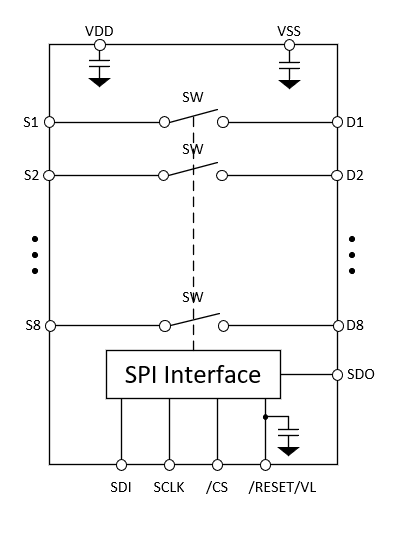SCDA051 June 2024 TMUXS7614D
1 Introduction
One of the biggest concerns when designing a system is having enough board space. Multiplexers with high channel count can have a large footprint. As channel count increases, often you are left with a trade off of limited functionality for controlling all the switches. For example, an 8-channel 1:1 can only have the functionality to control all the switches on/off with one or two control pins. If controlling all the switches individually is crucial, then the pin count needs to be increased, and in turn the size by adding extra GPIOS to be able to control all the switches independently. If there is a need for an 8-channel 1:1 with switches controlled independently; before, it would be a multi-chip design. With the SPI Multiplexer it can be done with a single chip. Instead of GPIOS, it has an internal SPI (as shown in Figure 1-1) allowing for independently controlling the switches, resulting in a smaller footprint design.
 Figure 1-1 SPI Controlled Multiplexer
Figure 1-1 SPI Controlled Multiplexer